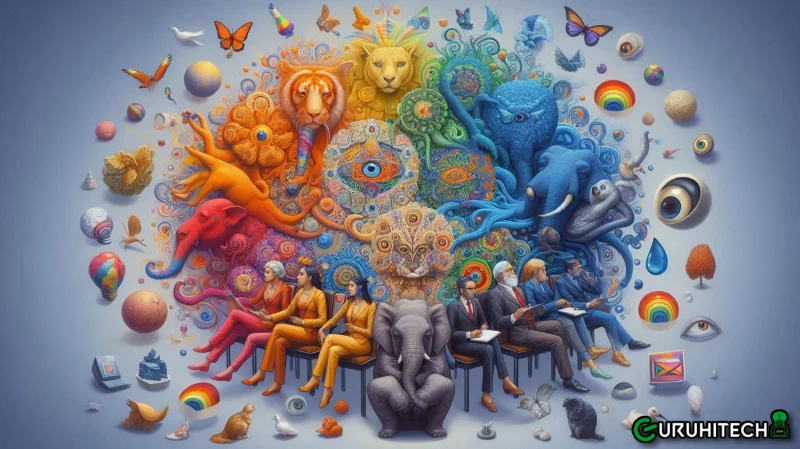Cultural Influences on Color Perception in Prediction Games: A Global Perspective

Color prediction games’ vibrant palettes and dynamic sequences captivate players worldwide. However, how individuals perceive and interpret colors is deeply rooted in cultural influences. This article explores the global landscape, exploring the diverse cultural perspectives that shape color perception in prediction games. From symbolism to preferences, understanding these cultural nuances adds a rich layer to the gaming experience and sheds light on the universal yet unique language of colors.
Color Symbolism across Cultures: Redefining Meanings
- Red: Passion or Warning?* In Western cultures, red is often associated with passion, love, and warmth. However, in some Eastern cultures, it carries connotations of luck, prosperity, and celebration. Color prediction games that use red hues may evoke different emotions and responses based on players’ cultural backgrounds.
- White: Purity or Mourning?* White commonly symbolizes purity in Western cultures, making it an ideal color for celebrations and weddings. In contrast, certain Eastern cultures associate white with mourning and funerals. Game developers must navigate these cultural nuances to ensure color choices align with the intended emotional impact.
Cultural Preferences in Color Aesthetics: Beyond Personal Taste
- Vibrancy in Latin America:* Latin American cultures often embrace vibrant, bold color palettes. Prediction games catering to this audience might benefit from energetic and lively color schemes that resonate with the cultural appreciation for dynamic visuals.
- Subdued Tones in Scandinavia:* Conversely, Scandinavian cultures tend to favor subdued and minimalist color aesthetics. Games designed for this audience might opt for calming and understated color palettes, aligning with the cultural preference for simplicity and elegance.
Color Harmony and Feng Shui: Asian Influences on Game Design
- Balancing Energies with Feng Shui:* In Asian cultures, particularly in China, Feng Shui principles often influence color choices. Developers might consider incorporating harmonious color combinations to enhance positive energy flow within the game environment, resonating with cultural beliefs in balance and harmony.
- Elemental Associations:* Colors are often linked to the five elements in Chinese philosophy – wood, fire, earth, metal, and water. Games can integrate these associations, offering a more profound cultural connection and reinforcing the alignment of color choices with traditional beliefs.
Spiritual Significance: Colors in Indian Culture
- Chakras and Color Associations:* Indian culture intertwines spirituality with color symbolism. Each chakra is associated with specific colors, and developers may draw inspiration from these associations to create games that resonate with the spiritual significance embedded in Indian traditions.
- Festive Hues:* Indian festivals are characterized by a riot of colors, each holding cultural significance. Games designed for an Indian audience might incorporate these festive hues to evoke a sense of celebration and cultural connection.
African Vibrancy: Rich Colors Reflecting Heritage
- Celebrating Heritage:* Across various African cultures, colors are crucial in expressing cultural Heritage. Games can draw on the vibrant hues found in traditional clothing, artworks, and ceremonies to create a visually rich and culturally resonant gaming experience.
- Symbolism in Adinkra Symbols:* Adinkra symbols from West Africa often incorporate specific colors with profound meanings. Integrating these symbols into game design can give players a more profound cultural immersion, fostering a connection to African Heritage.
Adaptation for Global Appeal: Balancing Universality and Specificity
- Cultural Sensitivity in Design: While celebrating cultural influences, developers must also navigate the challenge of creating games with global appeal. Balancing cultural sensitivity with universality involves thoughtful design choices, ensuring that the game speaks to a diverse audience without unintentionally perpetuating stereotypes or cultural misunderstandings. Platforms like lucky 11 login can play a role in offering these culturally sensitive games to a wider audience.
- Localization Strategies: Color prediction games can implement localization strategies to enhance cultural relevance. This may involve adapting color palettes, symbols, and themes to align with specific cultural contexts, creating a more inclusive and engaging experience for players worldwide. For gamers, lucky 11 login provides a platform where these localized gaming experiences can be enjoyed.
Conclusion:
As color prediction games continue to capture the imagination of players globally, understanding the profound impact of cultural influences on color perception becomes essential. Developers are presented with a unique opportunity to weave cultural richness into the fabric of gaming experiences, fostering connections and resonating with players on a deeper level. By embracing and celebrating cultural diversity, color prediction games can transcend geographical boundaries, creating a shared space where players from diverse backgrounds come together to enjoy a universal language—the language of colors.
Ti potrebbe interessare:
Segui guruhitech su:
- Google News: bit.ly/gurugooglenews
- Telegram: t.me/guruhitech
- X (Twitter): x.com/guruhitech1
- Bluesky: bsky.app/profile/guruhitech.bsky.social
- GETTR: gettr.com/user/guruhitech
- Rumble: rumble.com/user/guruhitech
- VKontakte: vk.com/guruhitech
- MeWe: mewe.com/i/guruhitech
- Skype: live:.cid.d4cf3836b772da8a
- WhatsApp: bit.ly/whatsappguruhitech
Esprimi il tuo parere!
Ti è stato utile questo articolo? Lascia un commento nell’apposita sezione che trovi più in basso e se ti va, iscriviti alla newsletter.
Per qualsiasi domanda, informazione o assistenza nel mondo della tecnologia, puoi inviare una email all’indirizzo [email protected].
Scopri di più da GuruHiTech
Abbonati per ricevere gli ultimi articoli inviati alla tua e-mail.
